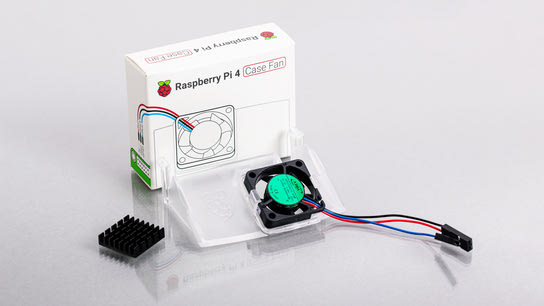Two months ago, I mentioned that I was looking to buy a heatsink for my Raspberry Pi on AliExpress (AE). I specifically looked for and ordered a heatsink that came with an adhesive thermal pad. Among the customer reviews of heatsinks on AE, I found other customers had resorted to installing their heatsinks with super glue. That’s a bad idea as regular super glue is a thermal insulator. In the meantime, the Raspberry Pi Foundation had released a potentially better and official cooling accessory.
Long story short, the heatsink I’d ordered arrived seven weeks later with a poorly fitted bit of regular double-sided tape (a thermal insulator) instead of a thermal pad. That’s the risk of shopping on AE: the product titles and descriptions are keyword-stuffed, machine translated from Chinese, and on top of that, some sellers don’t mind lying about their products.
I can’t evaluate the heatsink itself. It’s an aluminum block. It would probably have done an adequate job if I’d had a thermal pad or another way to install it. The heatsink only cost 0,52 USD, so it wasn’t any big loss. Annoyingly, the seller had closed its presence on AE, and I can’t even leave them a bad review.
Only two weeks after I’d placed the order for a heatsink, the Raspberry Pi Foundation released the new Raspberry Pi case fan. The official accessory case fan comes with a heatsink with a pre-applied thermal pad. I initially wasn’t interested in an active cooling solution. A heatsink would give me some more thermal headroom without adding any noise. A fan can be noisy, and it’s hard to find reviews of all the myriad of third-party options.
Tthe introduction of the official case fan from Raspberry Pi meant that I could actually dig up proper reviews of it prior to purchasing it. I’ll defer to Jeff Geerling’s review of the case fan if you’re interested in more details about it. (The first photo in his review isn’t it!)
I placed an order for the official case fan accessory (getting hold of official accessories is a whole thing in itself) even before I’d received the heatsink I’d already ordered on AE. I’m happy with the fan, mostly because it’s off most of the time. Turns out I didn’t need the additional thermal headroom for the workload I run on it. My Raspberry Pi still benefits from the included heatsink, and I tweaked the fan to only run at its lowest setting when it’s going.
I’m happy with my Raspberry Pi setup, but I prefer having the option to get a proper heatsink. Oh, and I’ve deleted my AliExpress account. Everything I’ve ordered through the site lately has been mislabeled and lacked advertised functionality. It’s the only place to get lots of sundry items, but I don’t want to deal with its marketplace anymore.
Unlike regular thermal paste, thermal pads sacrifice some thermal conductivity for the installation-convenience. Thermal paste deteriorates over time, primarily because of the thermal pump-out effect, and needs to be replaced every few years. I haven’t found any authoritative sources discussing whether thermal pads need periodic service. I’m inclined to believe that they don’t, as they’re firmer and less prone to suffer thermal pump-out.
I’m happy to see the Raspberry Pi Foundation (RPF) offering more official accessories at a competitive price. Part of Raspberry Pi’s appeal is its large third-party compatible ecosystem. However, I prefer getting something that just works and knowing that my money goes to the RPF rather than a scammy seller on AE.
